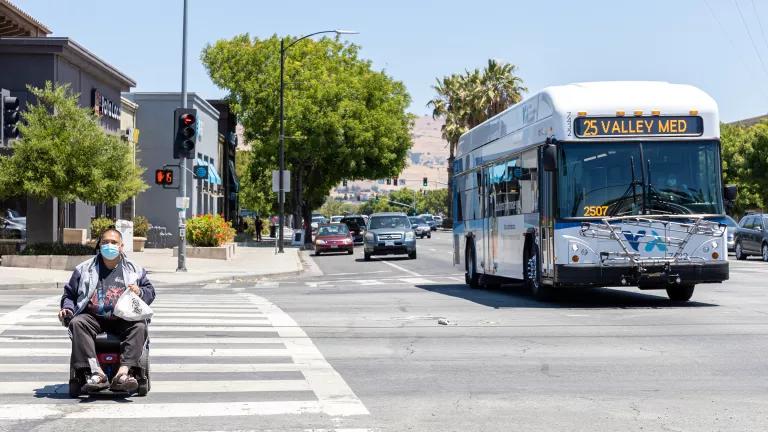Shared mobility is comprised of short-term transportation solutions enabling users to access various shared vehicles, bicycles, or other low-speed modes. In North America alone, shared-use mobility transcends the submarkets of carsharing, bike-sharing, ridesharing, on-demand services, shuttle services, and other emerging industries. Shared mobility methodologies have led to commuting options that are easier, greener, and more economical, and can also link critical first and last mile connections by extending convenient and cost-effective public transportation options at strategic locations. Although these new services and tools are flooding the transportation market, communities of color along with low-income and immigrant populations often do not have access to these new mobility solutions. Transportation and funding are connected and incredibly important to developing solutions for low-income communities. The goal of this case study is to locate and examine best practices for new mobility strategies, programs, and models benefiting vulnerable populations.
Bike-Sharing
Bike-sharing systems are designed to give the user a quick, easy, and accessible mode of transportation via bicycle. Normally a bike is picked up at one docking station and to be returned at the same station or another (point-to-point). Bike-sharing systems usually require a pre-registration or pre-authorization process using a credit or debit card, and the user is then charged for the time the equipment is rented.
Bikeshare systems have been established in cities all over the country, extending a presence in over 75 cities at the beginning of 2015. But while these systems are making great progress, the majority of users still tend to be young, wealthy, and male. Bike-share stations are strategically located near high ridership, yielding the required payments for business service operation. These areas are usually high-density commercial and residential neighborhoods within the city, whereas low-income populations and communities of color commonly live in the outlying city neighborhoods, and many are "unbanked" -- meaning that they do not own a debit or credit card to register for the system.
Car-Sharing
Car-sharing provides on-site, on-demand access to a motorized vehicle. Car-share systems are also designed for roundtrip and one-way use depending on the service provider and location, with users paying an annual membership fee and a fee for the hours rented or distance traveled. Peer-to-peer car-share systems allow private residents to rent their personal vehicles to strangers, through a round-trip mechanism.
Nonprofit car-share programs exist solely to support users who do not own a car and serve as a tool for social and environmental change by providing an accessible and affordable transportation option for the public. However, this model often requires public subsidy, donations, or grant assistance from sponsors and partners. For-profit car-share programs -- like Car2Go, Enterprise Rent-A-Car and ZipCar -- currently capture a larger market share. Car-share programs in general, while more cost-effective than car ownership, still have costs that may be prohibitive for some populations. Further, car-share operations attempting to extend into low-income neighborhoods often experience funding challenges.
Ride Sourcing, Ride Sharing, Technology, and the Shared Economy
Ride-sourcing is a type of on-demand service within the shared economy, and is arguably the hottest and fastest evolving new shared mobility option on the market. Transportation Network Companies (TNC) -- like Lyft, Uber, and SideCar -- allow users to connect to drivers via smartphone, and request a ride for a fee. These services differ from taxis, as drivers are not commercially licensed. TNCs conveniently help bridge first and last mile inefficiencies or distances for users by providing quick and easy connections to and from public transportation.
Ride-sharing systems are designed to connect a group of people in an origin or destination to share a ride, and are best utilized where transportation options may be very limited. Ride-sharing utilizes four modes of transportation: vanpool systems, microbus services, demand responsive transit, and carpool programs. Ride-sharing differs from ride-sourcing in that the group route is pre-determined, and riders pay a fraction of the cumulative cost.
TNCs have a complex and controversial relationship of benefits and challenges. For many people, accessing a smart phone to connect to drivers can be logistically or financially challenging, and language limitations of service apps create barriers for non-English-speaking users. A key question for TNCs is whether they complement or substitute public transit, and that remains a question in this still-evolving industry. Very little research shows that ride-sourcing TNCs are a more environmentally friendly than public transit. The primary environmental impacts of air quality and greenhouse gas emissions are not easily measured per person and environmental considerations are a mixed bag.
Conclusion
Shared mobility operations are becoming more dynamic, innovative, and cost effective. However, they still need to be connected to underrepresented low-income communities across the nation. Shared mobility options are most effective for low-income communities when tied to mass transit. Therefore, shared mobility and mass transit systems need to complement each other. In addition, data transparency across all shared mobility programs should remain a universal priority. The first challenge is finding comparable metrics between systems that are above the basic bike- and car-share usage statistics. There are few accessible examples to articulate multi-faceted streamlined data on the benefits, disadvantages, successes, and failures of shared mobility operations.
Another challenge of the shared economy is reaching an authentic understanding of grassroots community needs. Equitable shared mobility options are best utilized when combined with advocacy or community-based organizations. As shared mobility options evolve, community-based organizations need to be part of the design and marketing engagement. Funding mechanisms and support for new mobility systems vary on many levels. Operations that have reliable funding structures and strategies are the most successful and sustainable.



